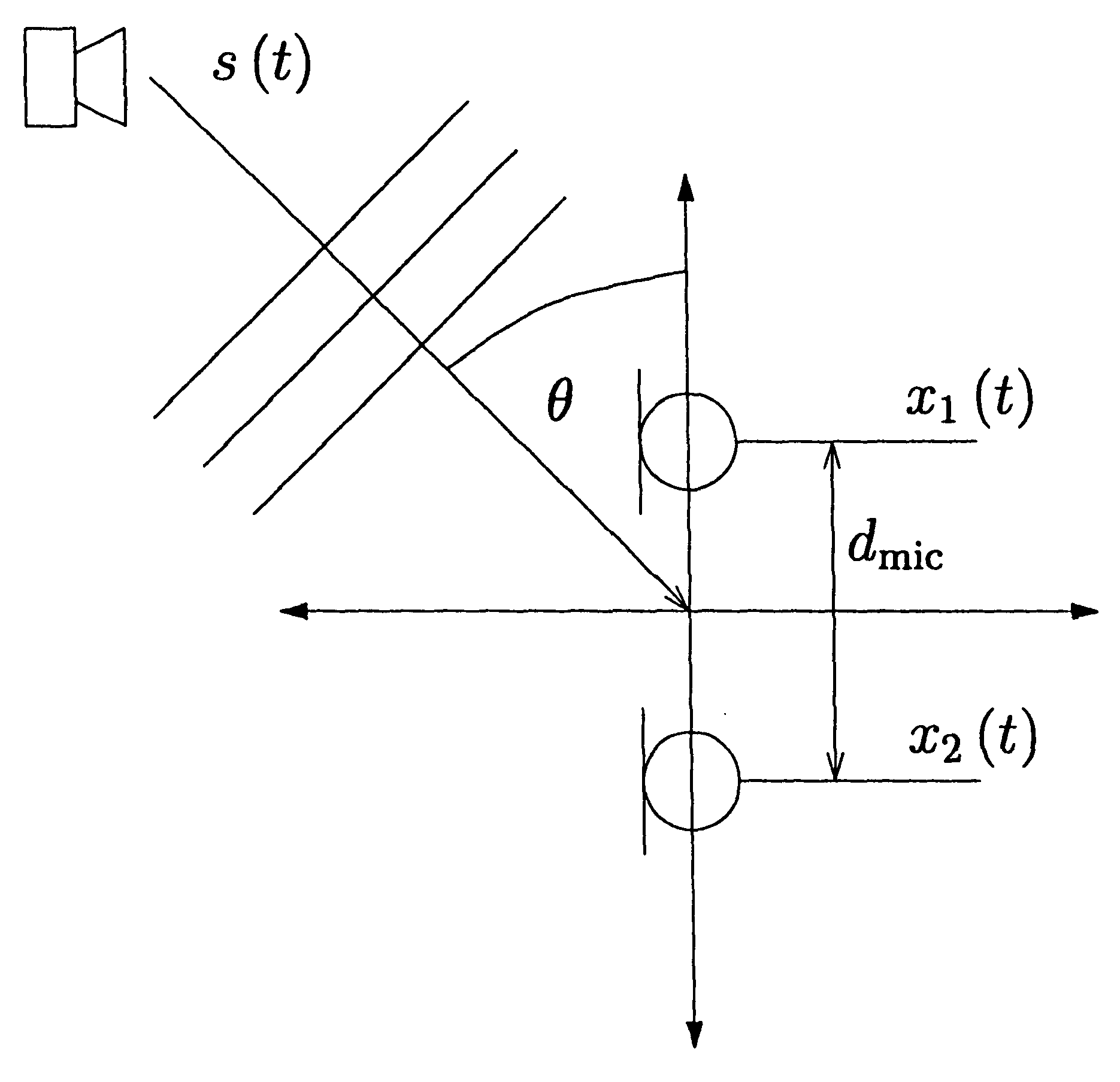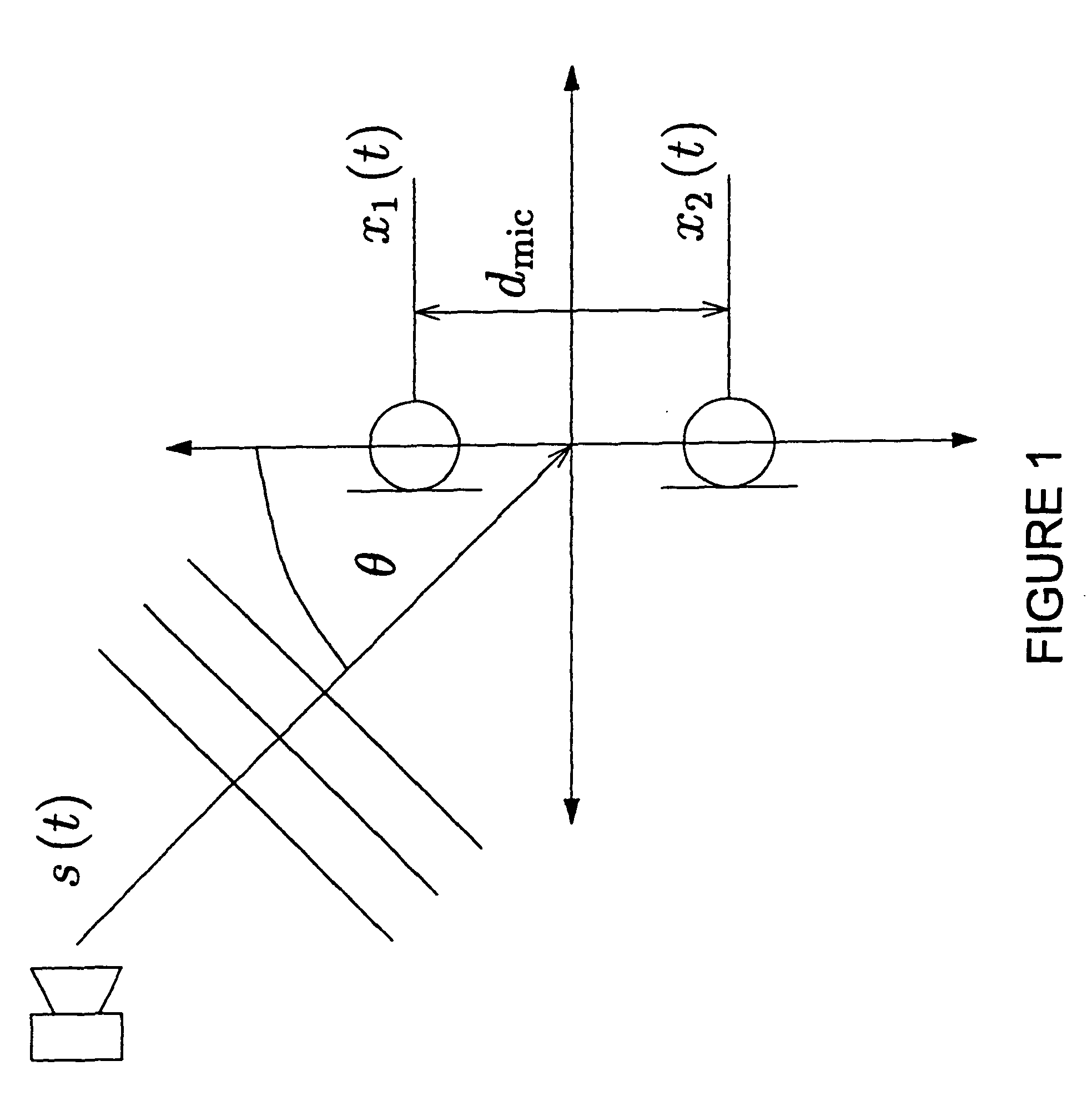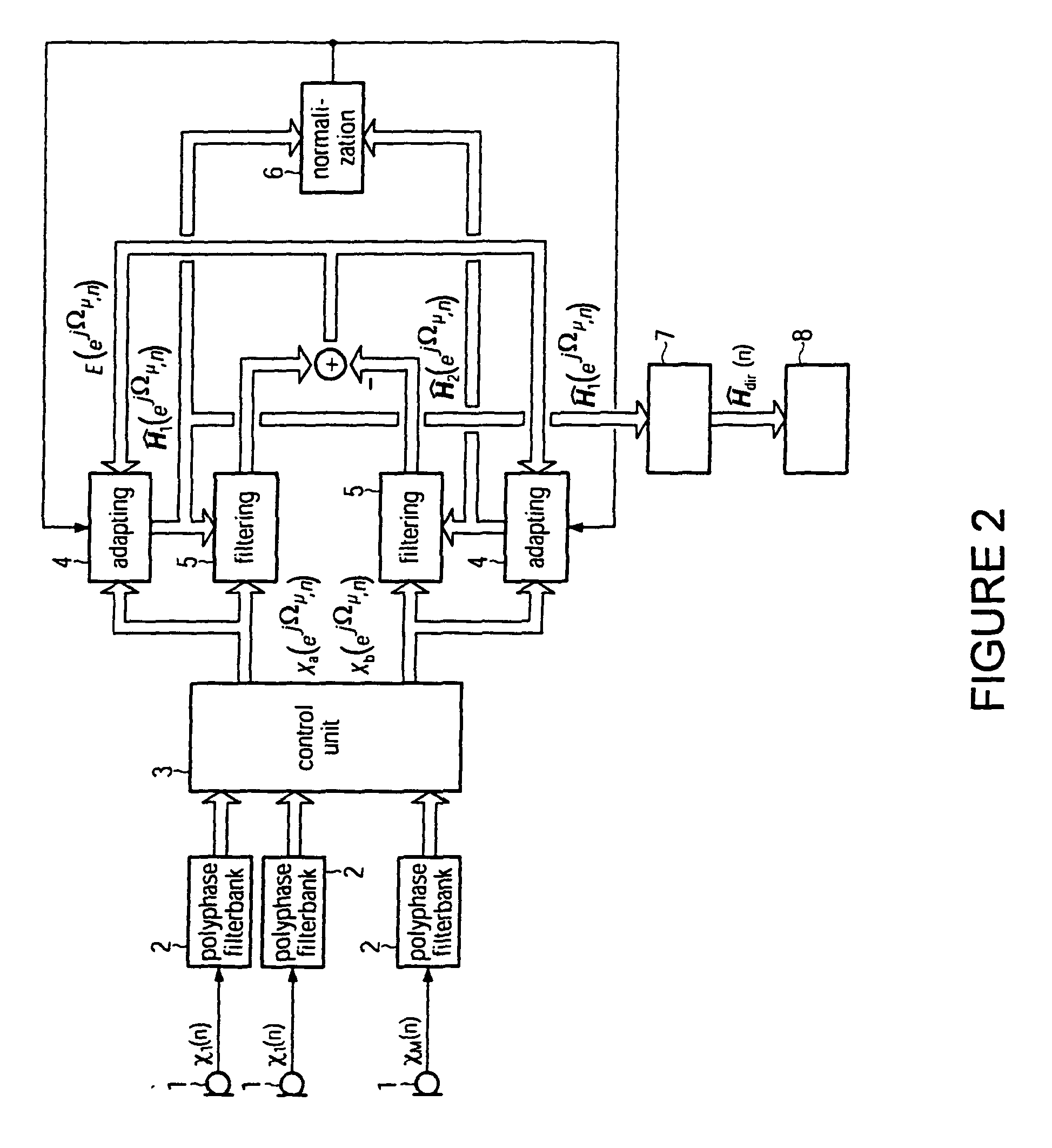Speaker Localization
a technology for speakers and microphones, applied in the field of digital processing of acoustic signals, can solve the problems of deterioration of speech signals detected by microphones, high cost of gcc methods, and failure of communication processes
- Summary
- Abstract
- Description
- Claims
- Application Information
AI Technical Summary
Benefits of technology
Problems solved by technology
Method used
Image
Examples
Embodiment Construction
[0009]The above-mentioned problem is solved by the method for localizing a sound source, in particular, a human speaker, according to claim 1. The method comprises the steps of
detecting sound generated by the sound source by means of a microphone array comprising more than two microphones and obtaining microphone signals, one for each of the microphones;
selecting from the microphone signals a pair of microphone signals for a predetermined frequency range based on the distance of the microphones to each other; and
estimating the angle of incidence (with respect to the microphone array) of the detected sound generated by the sound source based on the selected pair of microphone signals.
[0010]In principle, the processing for speaker localization can be performed after transformation of the microphone signals to the frequency domain by a Discrete Fourier Trans-formation or, preferably, by sub-band filtering. Thus, according to one example the method comprises the steps of digitizing the ...
PUM
 Login to View More
Login to View More Abstract
Description
Claims
Application Information
 Login to View More
Login to View More - R&D
- Intellectual Property
- Life Sciences
- Materials
- Tech Scout
- Unparalleled Data Quality
- Higher Quality Content
- 60% Fewer Hallucinations
Browse by: Latest US Patents, China's latest patents, Technical Efficacy Thesaurus, Application Domain, Technology Topic, Popular Technical Reports.
© 2025 PatSnap. All rights reserved.Legal|Privacy policy|Modern Slavery Act Transparency Statement|Sitemap|About US| Contact US: help@patsnap.com



